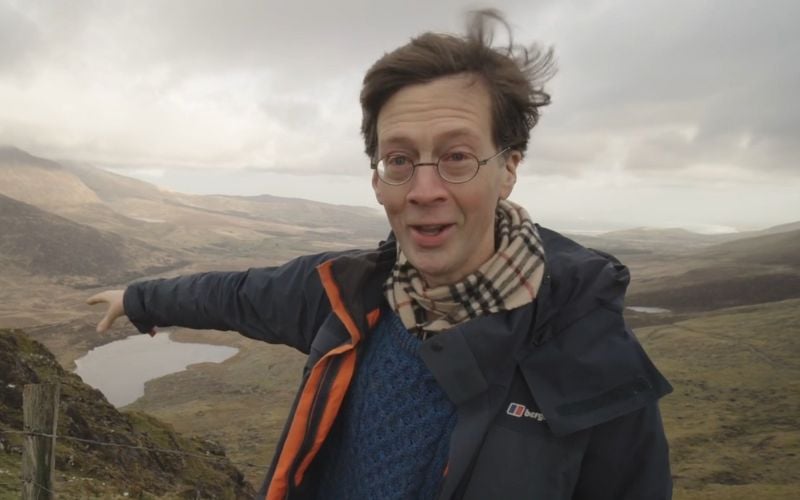THE brutal murder of two young Polish men by a gang of Dublin teenagers in a screwdriver attack on a Dublin street the weekend before last has shocked everyone here. It is shocking for two reasons. Firstly there was the grotesque level of violence used by the gang of more than a dozen young teenagers.
One Polish man was stabbed in the throat with the screwdriver, and the other was stabbed with such force in the head that the screwdriver punctured his skull and went into his brain. The average age of the gang appeared to be around 15.
Secondly there was the strong likelihood that racism was a factor in the attack, in spite of attempts since then to suggest that this was simply a random, mindless incident that could have happened anywhere to anyone.
The two young Polish men, Pawel Kalite, 26, and Marius Szwajkos, 27, had been in Ireland for less than two years and were auto mechanics. They were working at the Ace Auto Body Shop on the Longmile Road near the start of the motorway from Dublin to the south.
The manager there said they were "two of the most genuinely lovely guys you may ever meet. They were totally reliable and conscientious. They were always punctual and never looked like they had been in trouble. We have been out with them and they appeared to be guys who would walk away from trouble."
But trouble of the most vicious kind found them in the area where they were living in Dublin. The two young men were sharing a rented house with three other Poles on Benbulben Road in Drimnagh, a mature and usually quiet working class residential area just a couple of miles from the city center.
And it was there that they were murdered in the most horrific manner on a residential street, just before 7 p.m. on Saturday, February 23, a time when there are lots of people around.
Drimnagh is a settled area with an established community. Unlike some of the newer and bigger working class suburbs on the outer edge of Dublin, it is not a place where violence is common.
But Drimnagh, like many other parts of the city, has a problem with gangs of teenagers who hang around corners or outside shops with nothing to do except get into trouble.
Even though it is more than a week since the men were killed, there is still not absolute certainty about what happened. The initial reports from local people said that the two Polish men had finished work for the weekend and on their way home had called in to a bar and off license near where they lived in Drimnagh for a drink. As they were leaving the premises, they were approached by the gang of teenagers hanging around outside who asked the two men to buy alcohol for them.
This is something that happens regularly here, since it is against the law for off license owners to sell drink to underage teens. The two Polish men did what most people here do in that situation - they refused.
The teenagers then became angry and started to harass and abuse the men as they walked down the street to the row of shops on their way home. Some of this abuse was racist, so the teenagers either knew already that they two men were foreigners or they had picked up on it from the refusal.
The two men went into one of the shops, but when they came out again the teenagers were still there shouting abuse and threatening them. The men continued down the street to the house where they lived, which is within sight of the shops on Benbulben Road.
What happened next is unclear. One version of the story says that the Polish men were never asked by the teenagers to buy them alcohol, and that there had been an encounter between one of the Polish men and the teenagers which led to the trouble.
In this version, Kalite had been walking up the street to the shops from his home and had accidentally bumped into one of the teenagers who were crowding the footpath. In the confrontation that followed, Kalite had chased some of the teens around some parked cars to disperse them, before going back to the house.
It seems to me that both versions of the story could be true, with one incident happening before the other. Whatever the sequence of events, nothing could excuse what happened next.
What is certain is that shortly afterwards Kalite was at home, saw the gang of teenagers arriving outside the house and went out again to tell them to move away. He was attacked immediately, and one teenager wielding the screwdriver stabbed him the neck and head. He collapsed immediately on the ground, bleeding profusely from the throat.
At this point his workmate Szwajkos rushed out of the house into the street to help and he was also attacked with the screwdriver, although it is not certain if the same teenager was wielding it. He was hit with such force that the screwdriver penetrated his brain and he also collapsed in a pool of blood. The teenagers then ran for it.
Both men were still alive when taken to hospital. Szwajkos died a couple of days later, on Monday of last week. Kalite died on Wednesday, five days after the attack.
To say that this vicious double murder shocked not only Drimnagh but also Dublin and the rest of Ireland is an understatement. People were shocked, but they were also disgusted and extremely angry.
And in spite of official statements from the authorities and from representatives of the large Polish community in Ireland that this was not a racist attack, most ordinary people seemed to think that there was a strong element of racism in what had happened.
Any admission of racism here seems to cause acute embarrassment, and this feeling was exaggerated even more by the coincidence that Taoiseach (Prime Minister) Bertie Ahern was on a visit to Eastern Europe last week, including Poland.
Speaking there, he expressed his revulsion at what had happened and offered condolences on behalf of the Irish people to the Polish prime minister. But he also emphasized that the "appalling event" was the result of "mindless violence," and that the murder of the two men "had nothing to do with the fact that they were Poles. It was just hooliganism at its worst."
The fact is, however, that the story made headlines in Poland, and a reporter in Dublin on the Polish weekly Polska Gazeta said the Polish community in Ireland is starting to feel a little afraid.
"Just last weekend, five or six people were attacked and now two are dead," he said. "We don't know if they were attacks against Polish people. There is a bad feeling about it among the Polish community here and back home in Poland."
It seems clear to me that there was an element of racism involved in the murders ... but it's also clear to me that that is the least of our worries. What is really worrying is that we are producing young teenagers that are capable of such extreme, bloody violence, almost like they were in a Tarantino movie. What does that say about the way society in Dublin - and in Ireland - is going?
Local people were reluctant to name the teenagers despite asserting that "everyone around here knows who did it." The fear of reprisals is real. But Gardai (police) have already questioned at least three teenagers suspected of being directly involved in the savage attacks.
As usual in cases like this they're all saying they saw nothing, or they are blaming each other. One of the teenagers who is 16 or 17 is suspected of bringing the screwdriver to the scene and has a list of previous convictions, including some for carrying offensive weapons like knives. Gardai are considering the possibility that the murders may been committed by different youths.
One of the detectives said that, while it was likely that one culprit was responsible for the two stabbings, "we are examining the possibility that the screwdriver was used in the first murder and then picked up by a different youth to attack the second victim."
Gardai know all those who were part of the gang, but putting together exactly what happened and who is responsible is taking time. Although there is little doubt that charges will be brought against some of them, the Gardai have to be careful that the case will stand up in court.
Meanwhile, in the days after the murders, a lot of local people were complaining that they had been plagued by these teenagers congregating near the shops and that, although the Garda station was around the corner, the Gardai only moved them on now and then. They said that the teens were well known and that they intimidated local people all the time and seemed to be afraid of no one.
The Gardai denied there was a problem in the area and said that community policing in Drimnagh was working well. And there were the usual voices from the commentariat saying that there were no facilities for kids in the area, and there was nothing for them to do except hang around. So it was all society's fault, you see.
The truth is, however, that there is a local park and football club and a youth club which opens regularly. But these kids, from dysfunctional families, are more interested in drink and drugs.
They don't want to make any effort. And hyped up on drugs and computer games, they are capable of anything.
The facilities for teenagers in Drimnagh are no different than they were 20 or 30 years ago and kids were bored back then as well, but no one rammed a screwdriver into someone's skull. What's changed in the last decade is the money brought by the Celtic Tiger, the drugs, the level of expectations, the fierce anger among those youngsters at the bottom who can't get what they see others around them getting.
That is the real worry about this shocking case. It's a demonstration that Irish society now has an underclass of dysfunctional families where parents don't work and spend their time and money in the pub, and feral teenagers are left to run wild and get their drugs whatever way they can.
It's a sordid, violent and vicious world in which stabbing someone to death with a screwdriver because of an imagined insult is possible, even for a young teenager. Our welfare state has robbed this underclass of any sense of achievement. They are brutalized and dumbed down, a vicious underclass with no ambition, no ability, no compassion and enormous frustration.
Last Saturday, a week after the murders and at the same time as the killings had happened, hundreds of local people held a vigil on Benbulben Road in front of the house in which the two Polish men lived. On Monday of this week a memorial service was held in the local church attended by President Mary McAleese and the Archbishop of Dublin as well as several thousand people from the area.
Local people, shops, businesses and the auto shop where the men had worked organized collections to pay for the repatriation of the bodies back to Poland and the expenses of the relatives who had come over.
All of which is admirable, and all designed to show Polish people that we care and that they are welcome here. Of all the immigrants, the Poles are the most popular as well as being the most numerous in Ireland because they are the most like us, hard working, family-orientated, Catholic, many from a rural background.
So the reaction here to this horrific event will go some way to reassuring the almost 200,000 Poles who now live in Ireland. But fixing the part of Irish society that produces the teenage thugs who are capable of such an atrocity will be much more difficult.




Comments